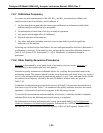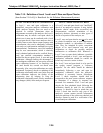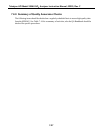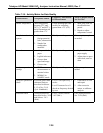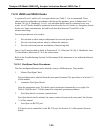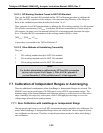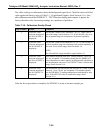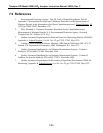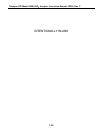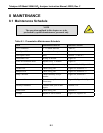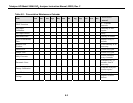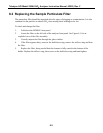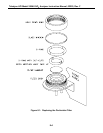
Teledyne API Model 200AU NO
X
Analyzer Instruction Manual, 02293, Rev. F
7-33
7.7.2 Span Calibration with AutoRange or Independent Range
Observe the following guidelines when calibrating in AutoRange or Independent Range.
1. When doing a span calibration of the M200AU use 80% of the highest of the ranges. This
will result in the most accurate calibration.
2. When selecting concentrations for the NO/NO
x
or NO
2
(GPT) dynamic calibrations use
80% of the highest AutoRange or the highest Independent Range. This will produce the most
accurate calibration.
3. If the calibration data is obtained from the RS-232 port or from the front panel display,
no special changes are necessary if the instrument is in AutoRange or Indep. Range. This is
because the internal hardware and software has sufficient dynamic range to cover the entire
EPA equivalent range, also those features only affect the analog outputs.
4. If using the analog outputs and a chart recorder or datalogger, be sure to note when
AutoRange occurs so that the correct concentration values are used. With Independent
Ranges, change the ranges so that all ranges are equal to the highest range so that all
calibration data is on scale.
5. Calibration curves or relationships should be obtained for each range used.
7.8 Calibration Quality
After calibration is complete, it is very important to check the QUALITY of the calibration. The
calibration of the M200AU involves balancing several sections of electronics and software to
achieve an optimum balance of accuracy, noise, linearity and dynamic range.
The following procedure checks the Slope and Offset parameters in the equations used to
compute the NO, and NO
x
concentrations. It is important that they fall within certain limits with
respect to themselves and to each other. For an explanation of the use of these terms in the
concentration calculation see Section 5.2.2.5.
The slope and offset parameters are similar to the span and zero pots on an analog instrument.
Just as in the analog instrument, if the slope or offset get outside of a certain range, the
instrument will not perform as well.
The slope value will be slightly different on the NO and NO
x
channels. This is due to slight
differences in pneumatic resistance in each pathway. If the slopes are significantly different,
there is a calibration error or a cross port leak in the switching valve. If there is a sudden large
change in slopes after a calibration, that usually indicates a change in reaction cell pressure. This
generally requires a Factory Calibration covered in Section 9.1.6.



